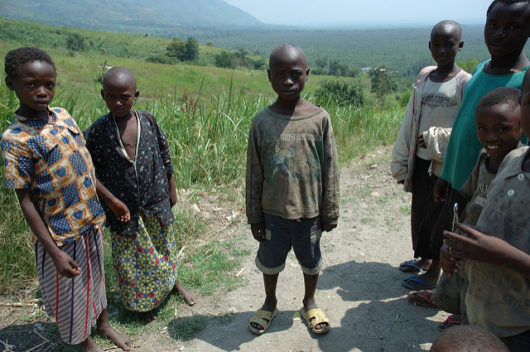Top 10 Facts About Poverty in the Democratic Republic of the Congo

Poverty in the Democratic Republic of The Congo (DRC) can be interpreted as a combination of spillover conflict from neighboring African nations, as well as an embedded culture of governmental corruption. In the text below, the top 10 facts about poverty in the Democratic Republic of the Congo will address the underlying causes, as well as how DRC has been able to improve impoverished conditions in recent years.
Top 10 Facts About Poverty in the Democratic Republic of the Congo
- The Democratic Republic of Congo has a population of approximately 78 million people. Out of this number, 80 percent of the population live in extreme poverty. DRC is classified internationally as the country of medium concerning human development. Indicators of human development measure parameters such as population’s well being, regarding life expectancy, child/maternal mortality, infant mortality, malnutrition and mortality associated with a disease.
- Wealth is unequally distributed, far better in urban over rural areas and wealth is a determinant for access to sanitation and medical services. The poor in rural areas are most affected.
- Poverty is also a direct consequence of the political conflict that occurred during the 1990s, called the First and Second Congo War. The country has seen a dramatic transformation from a state engulfed in brutal genocidal violence into a relatively stable post-conflict society. Poverty is a byproduct of political violence that in turn has significant economic and social repercussions. The consequences of the war can be seen even today, as more than 900,000 people were displaced from the country. in 2016 War-torn communities have left approximately 4 million children orphans or living on the streets.
- Contrary to popular belief, poverty and development are linked. As African nations develop, their populations rise as a result. However, the flip side to this is that malnutrition and new diseases spread as the existing system of governance cannot keep up with the uptick of the population.
- DRC transitioned from a Marxist to free market economy that has relied heavily on wealth from the mining industry. Upon the transition, the new economy has not been managed appropriately, as wealth is spent lavishly on the patronage of government officials instead of humanitarian efforts.
- War impacted on poverty since infrastructure communities that rely on for clean water and sanitation were destroyed, contributing to the spread of disease. Waterborne diseases, such as diarrhea, cholera and malaria are the most common and deadly in the country. Less than one-fourth of DRC’s population has access to clean drinking water and sanitation services. DRC has a 45 percent inoculation rate of malaria, resulting from lack of access to cleaning drinking water and poor nutrition. Approximately 40 percent of deaths in the country is related to malaria.
- DRC’s governmental structure has had a tumultuous relationship with the population, engaging in genocidal violence during internal conflict, and an unstable kleptocratic government post-conflict system. Historically, the country functions under an economy and government of affection. Primarily, government investment is spent on personal relations to buy popular support, rather than on social programs that would earn support.
- The people of the DRC look to the international community and nongovernmental organizations for assistance. The Nouvelle Esperance (New Hope) program offered great assistance in the Millennium Declaration that is based in human development and humanitarian assistance but also has specific goals to eliminate poverty all together using a strategy that fosters national and international stability. The Global Partnership plays an integral role in improving education in the DRC, increasing access to education by providing $20 million in learning materials and renovating 728 classrooms. Other notable contributions have come from UNICEF and USAID that aid and monitor the quality of the services that the country’s government provides.
- Significant assistance programs have been provided by transnational banks such as the World Bank and the African Development Bank. African Development Bank’s helps reduce infant and maternal mortality rates through programs that equally distribute medical supplies. World Bank’s helps with the program aimed to increase standards of living through sanitation, energy and various accessible social services. World Bank has 29 total projects active in the country representing a total of $3.8 billion. World Bank has also funded medical projects assisting the DRC in the successful eradication of poliomyelitis. Since World Bank began humanitarian projects in the DRC in the post-conflict era of the 1990s, there is a vast improvement since the strategy has shifted away from emergency assistance programs to sustainable growth strategies.
- Different organizations are helping the country’s situation. With the help of the U.N. which the Democratic Republic of Congo joined in 2000, the country has successfully been able to demobilize and improve health and education opportunities. Britain’s Department of International Development has developed an initiative that aims to support long-term programs that tackle the underlying issues of poverty, with the goal of cutting the number of people in poverty in half, as well as ensuring all children have a primary education, sexual equality, a reduction in child and mother death rates and environmental protection. Other notable contributions have come from the French and Belgian governments that foster public management of resources as well as public administrative support.
These top 10 facts about poverty in the Democratic Republic of the Congo provide an understanding of not only how poverty developed in the country and the effects poverty has had on the people, but also working solutions to address this issue. The Democratic Republic of the Congo can also provide an example of success for other post-conflict societies in improving poverty rates.
– Kimberly Keysa
Photo: Flickr
